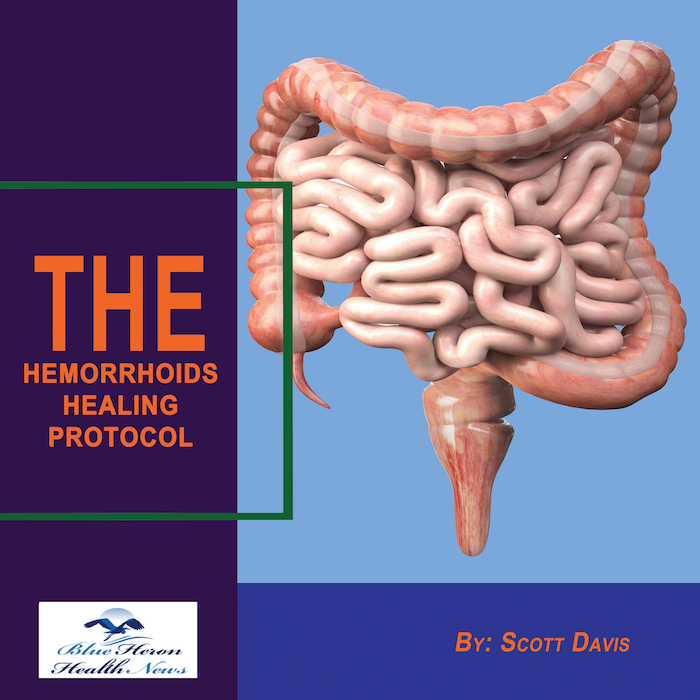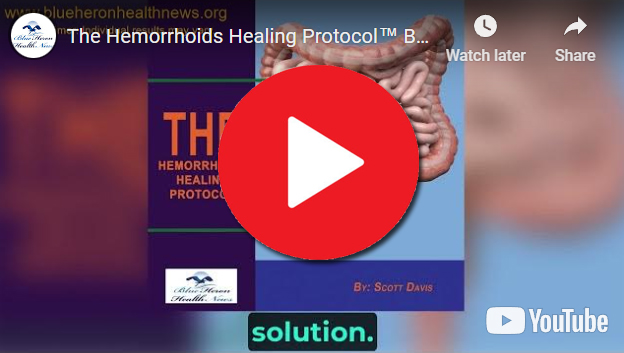
The Hemorrhoids Healing Protocol™ By Scott Davis Hemorrhoid healing protocol is a three-week online program that helps in treating and reducing hemorrhoids. It teaches gentle recipes and movements, natural and effective remedies that help in treating hemorrhoids.This program is not like the usual prescription medicines, it is a hell of a lot more than just those drugs. It focuses more on elevating the two main not so good habits that are connected to the Hemorrhoids. Overall the sole motive of this program is to remove the problem from its root instead of just treating the symptoms.
What are hemorrhoids?
Introduction
Hemorrhoids, also known as piles, are swollen and inflamed veins in the rectum and anus that cause discomfort and bleeding. They are a common condition, affecting millions of people worldwide. Although hemorrhoids can be painful and bothersome, they are usually not life-threatening and can often be managed with lifestyle changes, over-the-counter treatments, and in some cases, medical procedures. This comprehensive analysis explores the causes, symptoms, diagnosis, treatment, and prevention of hemorrhoids, providing a detailed understanding of the condition.
Anatomy and Types of Hemorrhoids
Anatomy of the Anal Canal and Rectum
The anal canal and rectum are part of the lower digestive tract. The rectum is the final section of the large intestine, leading to the anal canal, which ends at the anus. The walls of the rectum and anus contain a network of blood vessels, including veins, which can become swollen and inflamed, leading to hemorrhoids.
Types of Hemorrhoids
Hemorrhoids are classified into two main types based on their location:
- Internal Hemorrhoids: These occur inside the rectum and are usually not visible. Internal hemorrhoids are generally painless but can cause bleeding during bowel movements.
- External Hemorrhoids: These occur under the skin around the anus and are visible. External hemorrhoids can cause significant pain, itching, and swelling.
- Prolapsed Hemorrhoids: These are internal hemorrhoids that have protruded through the anal opening. They can be felt as a lump outside the anus and may cause pain and discomfort.
- Thrombosed Hemorrhoids: These occur when a blood clot forms within an external hemorrhoid, causing severe pain, swelling, and inflammation.
Causes and Risk Factors
Causes of Hemorrhoids
Hemorrhoids develop when the veins in the lower rectum and anus become swollen and inflamed. Several factors can contribute to the development of hemorrhoids:
- Straining During Bowel Movements: Straining increases pressure on the veins in the rectum and anus, leading to swelling and inflammation.
- Chronic Constipation or Diarrhea: Both conditions can cause repeated straining and pressure on the anal veins.
- Sitting for Long Periods: Prolonged sitting, especially on the toilet, can increase pressure on the anal veins.
- Obesity: Excess body weight increases pressure on the pelvic and rectal veins.
- Pregnancy: The increased pressure on the pelvic veins during pregnancy can lead to the development of hemorrhoids.
- Anal Intercourse: This can cause irritation and damage to the anal veins, leading to hemorrhoids.
- Low-Fiber Diet: A diet low in fiber can lead to constipation and straining during bowel movements.
- Aging: As people age, the tissues supporting the veins in the rectum and anus can weaken and stretch, making them more susceptible to hemorrhoids.
Risk Factors
Several risk factors can increase the likelihood of developing hemorrhoids:
- Age: Hemorrhoids are more common in people over the age of 50.
- Family History: A family history of hemorrhoids can increase the risk of developing the condition.
- Sedentary Lifestyle: Lack of physical activity can contribute to the development of hemorrhoids.
- Heavy Lifting: Repeated heavy lifting can increase pressure on the anal veins.
- Genetics: Some people may be genetically predisposed to developing hemorrhoids.
Symptoms of Hemorrhoids
The symptoms of hemorrhoids vary depending on the type and severity of the condition.
Symptoms of Internal Hemorrhoids
- Painless Bleeding: Bright red blood on toilet paper, stool, or in the toilet bowl after a bowel movement.
- Prolapse: Protrusion of the hemorrhoid through the anal opening, which may cause discomfort and irritation.
Symptoms of External Hemorrhoids
- Pain and Discomfort: Pain around the anus, especially during bowel movements or when sitting.
- Swelling and Inflammation: Swelling and inflammation around the anus.
- Itching and Irritation: Itching and irritation in the anal area.
- Lumps: Hard lumps near the anus, which may be thrombosed hemorrhoids.
Symptoms of Prolapsed Hemorrhoids
- Visible Lump: A visible lump protruding from the anus.
- Pain and Discomfort: Pain and discomfort, especially during bowel movements.
- Bleeding: Bright red blood during bowel movements.
Symptoms of Thrombosed Hemorrhoids
- Severe Pain: Intense pain around the anus, which may be constant.
- Swelling and Inflammation: Significant swelling and inflammation around the anus.
- Hard Lump: A hard lump near the anus, which is a blood clot within the hemorrhoid.
Diagnosis of Hemorrhoids
Medical History and Physical Examination
A thorough medical history and physical examination are the first steps in diagnosing hemorrhoids. The doctor will ask about symptoms, dietary habits, lifestyle factors, and any underlying medical conditions.
- Visual Examination: External hemorrhoids can often be diagnosed through a visual examination of the anal area.
- Digital Rectal Examination (DRE): The doctor may perform a digital rectal examination to feel for internal hemorrhoids or other abnormalities in the rectum.
Diagnostic Tests
Several tests can help diagnose hemorrhoids and rule out other conditions:
- Anoscopy: A small, lighted tube called an anoscope is inserted into the anus to examine the lining of the lower rectum and anal canal.
- Sigmoidoscopy: A flexible tube with a camera, called a sigmoidoscope, is inserted into the rectum to examine the lower part of the colon and rectum.
- Colonoscopy: A longer, flexible tube with a camera, called a colonoscope, is inserted into the rectum to examine the entire colon. This test may be performed if there is a need to rule out other conditions, such as colorectal cancer.
Treatment of Hemorrhoids
Lifestyle and Dietary Changes
Making lifestyle and dietary changes is often the first step in managing hemorrhoids:
- High-Fiber Diet: Eating a diet rich in fiber, including fruits, vegetables, whole grains, and legumes, can help soften stools and reduce straining during bowel movements.
- Hydration: Drinking plenty of water and other fluids can help prevent constipation and promote regular bowel movements.
- Regular Exercise: Regular physical activity can help prevent constipation and reduce pressure on the anal veins.
- Avoid Straining: Avoid straining during bowel movements and spending long periods on the toilet.
- Good Hygiene: Keeping the anal area clean and dry can help prevent irritation and infection.
Over-the-Counter Treatments
Several over-the-counter treatments can help relieve the symptoms of hemorrhoids:
- Topical Treatments: Creams, ointments, and suppositories containing hydrocortisone or witch hazel can help reduce pain, itching, and inflammation.
- Pain Relievers: Over-the-counter pain relievers, such as acetaminophen, ibuprofen, or aspirin, can help alleviate pain and discomfort.
- Cold Compresses: Applying cold compresses or ice packs to the affected area can help reduce swelling and pain.
- Sitz Baths: Soaking the anal area in warm water for 10-15 minutes several times a day can help relieve pain and inflammation.
Medical Procedures
For severe or persistent hemorrhoids, medical procedures may be necessary:
- Rubber Band Ligation: A rubber band is placed around the base of the hemorrhoid to cut off its blood supply, causing it to wither and fall off.
- Sclerotherapy: A chemical solution is injected into the hemorrhoid to shrink it.
- Infrared Coagulation (IRC): Infrared light is used to coagulate the blood vessels in the hemorrhoid, causing it to shrink.
- Hemorrhoidectomy: Surgical removal of the hemorrhoid, typically used for severe cases or thrombosed hemorrhoids.
- Stapled Hemorrhoidopexy: A surgical procedure that uses a stapling device to reposition and secure prolapsed hemorrhoids.
Prevention of Hemorrhoids
Preventing hemorrhoids involves making lifestyle and dietary changes to reduce the risk of developing the condition:
- High-Fiber Diet: Eating a diet rich in fiber can help prevent constipation and reduce the need for straining during bowel movements.
- Hydration: Drinking plenty of fluids can help keep stools soft and promote regular bowel movements.
- Regular Exercise: Regular physical activity can help prevent constipation and reduce pressure on the anal veins.
- Avoid Straining: Avoid straining during bowel movements and spending long periods on the toilet.
- Healthy Weight: Maintaining a healthy weight can reduce pressure on the pelvic and rectal veins.
- Good Hygiene: Keeping the anal area clean and dry can help prevent irritation and infection.
Potential Complications of Hemorrhoids
While hemorrhoids are usually not life-threatening, they can lead to complications if left untreated:
- Anemia: Chronic bleeding from hemorrhoids can lead to anemia, a condition characterized by a deficiency of red blood cells.
- Strangulated Hemorrhoid: A prolapsed hemorrhoid can become trapped and cut off from its blood supply, leading to severe pain and tissue death.
- Infection: Hemorrhoids can become infected, leading to abscesses and other complications.
- Anal Fissures: Chronic irritation and inflammation from hemorrhoids can lead to the development of anal fissures, small tears in the lining of the anus.
Conclusion
Hemorrhoids are a common condition that can cause significant discomfort and pain. Understanding the causes, symptoms, diagnosis, treatment, and prevention of hemorrhoids is essential for managing the condition effectively and improving quality of life. Lifestyle and dietary changes, over-the-counter treatments, and medical procedures can help alleviate symptoms and prevent complications. Public awareness and education are crucial for empowering individuals to recognize the symptoms of hemorrhoids and seek appropriate treatment. By making informed choices and taking proactive steps, individuals can effectively manage hemorrhoids and maintain good anal and rectal health.
The Hemorrhoids Healing Protocol™ By Scott Davis Hemorrhoid healing protocol is a three-week online program that helps in treating and reducing hemorrhoids. It teaches gentle recipes and movements, natural and effective remedies that help in treating hemorrhoids.This program is not like the usual prescription medicines, it is a hell of a lot more than just those drugs. It focuses more on elevating the two main not so good habits that are connected to the Hemorrhoids. Overall the sole motive of this program is to remove the problem from its root instead of just treating the symptoms.
